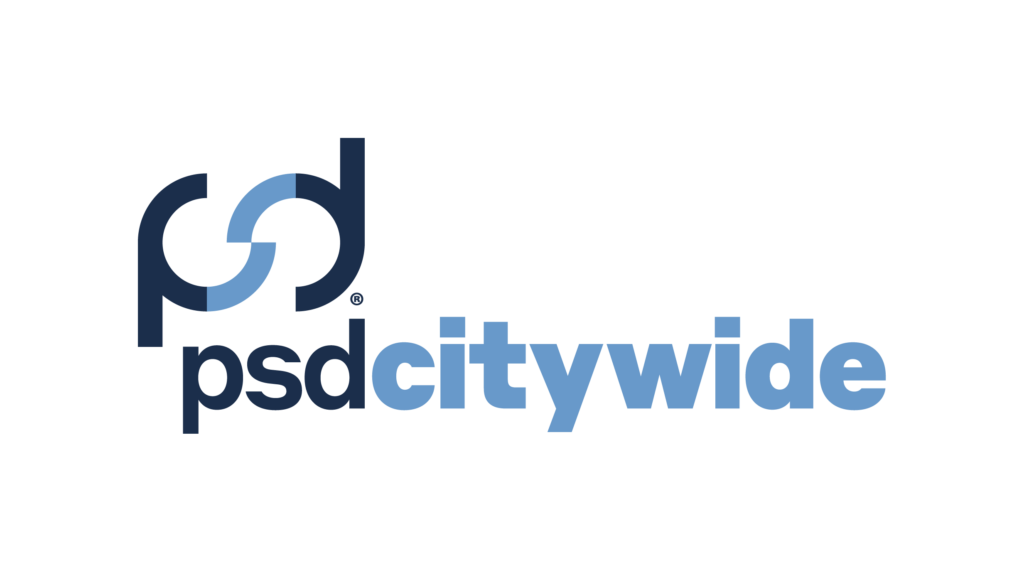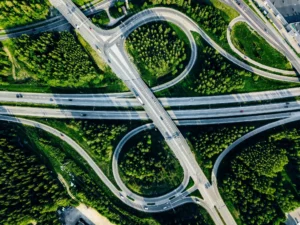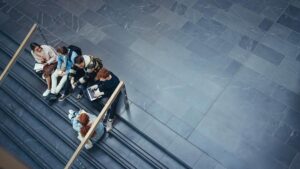Gone are the days when municipalities can lean on the old saying, “this is the way we have always done it” as a reason to undertake work and fund it through a “status quo” lens. Citizens feel overburdened with taxes from all levels of government. Further, the property tax is regressive in nature, meaning it is applied uniformly, affecting citizens with low incomes more severely than those with high incomes.
Over the 12 years that I have sat on Waterloo City Council, I have seen significant pressures on the City’s operational and capital budgets. These pressures often relate to winter control, loose leaf collection, facility operations, storm water management, transportation-related infrastructure, and more.
Higher levels of governments are requiring municipalities to demonstrate their needs associated with infrastructure renewal through the development of detailed asset management plans. Prioritization of infrastructure renewal is also required. The combination of all those factors with municipal infrastructure deficits and the well-documented changes in climate has resulted in the fundamental need for municipalities to question how they undertake all aspects of service delivery from planning, development, investment, and re-investment.
Transportation emissions are one of the largest sources of Greenhouse Gas Emissions (GHG) and create huge climate change opportunities for municipalities in which to think differently and substantially reduce GHGs. Over previous decades, municipalities were built for cars, not for people. We lost sight of the importance of walking to work, the dentist, doctor, and grocery store. In doing this, we “over-designed” our roads. This has created a multitude of problems that we now see including:
a. Increased traffic speeds. People will drive at a speed they feel comfortable at. If the road is wide open with no other car in sight, people drive fast – too fast. People living near these roads routinely demand traffic-calming installations for which there is no funding.
b. Increased traffic noise. The faster the cars go, the louder the noise they create. This has resulted in housing prices decreasing near these “fast roads.” Municipalities are being pressured to install noise barrier walls.
c. Isolated neighborhoods are “islands” surrounded by busy streets, where cars speed by and where pedestrians cannot safely cross. Consequently, pedestrians choose to drive instead.
d. Vehicles have become dominant in this car-centric space. They travel too fast and they are unwilling and/or afraid to share the space with other road users, such as cyclists. This creates a “car versus cyclist” conflict that is harming the ability of citizens to live in a community with one another.
e. Citizens who do not own or operate an automobile are isolated. This includes every demographic including children, students, adults, and seniors. I firmly believe all individuals are equally important as car drivers and as a municipal councillor, I am committed to making decisions that demonstrate that everyone feels equally served. I always try to remind myself that I am only “temporarily able-bodied” and tomorrow, I may need to rely entirely on getting around without a car. I challenge everyone to think about that for a moment. Would you want a municipality to care about you if you couldn’t drive a car?
Over previous decades, municipalities were built for cars, not for people. We lost sight of the importance of walking to work, the dentist, doctor, and grocery store. In doing this, we ‘over-designed’ our roads.
So how can we think differently where transportation emissions are concerned?
Here are a few quick “wins” that can be undertaken through both climate change opportunities for municipalities and cost reduction considerations:
1. Roundabout installations
This intersection control saves money associated with the installation and operation of an electric traffic light and the associated software integration (approximately 50,000/year). It reduces the strain on the municipality’s winter control budget because a one or two lane roundabout can be controlled with one pass of a plow. Idle emissions are almost eliminated, reducing GHGs. Traffic is slowed and/or calmed through the intersection. Most importantly, in the event of any type of intersection collision, roundabouts are safer.
And what about pedestrians? We were taught to look both ways before crossing; roundabouts return the obligation to the pedestrian to confirm the way is clear before they cross. Far too many people are struck and killed in signalized intersections because they believe they have the right-of-way when they do not (such as when the countdown clock has started and they run across at the last minute).
2. Create active transportation corridors
Cities do not build active transportation corridors for cyclists, they build them for people! Most municipalities want to be accessible and walkable. For many, active transportation corridors provide people with independence to get from one place to another because they are not car owners or drivers. Investing in sidewalks, paved trails, and on/offroad cycling infrastructure is critical to supporting citizens looking to shift their way of “getting-around-town.” This shift away from vehicle use will most certainly reduce GHG emissions. The City of Waterloo has gradually increased the number of kilometres of active transportation routes over the years and installed trail counters. The use of these corridors is staggering.
3. Right size your roads
When the time comes to build a new road or rehabilitate an existing road you do not have to replace it with the same old, same old. Municipalities need to adopt a complete street philosophy that creates transportation corridors for all users – cars, public transit, bikes, and pedestrians. Rightsizing a road is often referred to as “the process of reallocating the street space to better serve the full range of users” [1]. Once the complete street policy is in place, your staff team will be free to
design transportation options for people, not just car users.
In Waterloo, we received a Federation of Canadian Municipalities sustainability award for taking a four-lane, cyclist and pedestrian-hostile road and created a two-lane road that was calmed with reduced width travel lanes, on-road bike lanes, and landscaped centre medians. The result was that traffic speeds dropped and cyclists and pedestrians
returned to the space. In addition, operation and maintenance costs decreased because there is less asphalt to maintain and it is one sweep of a winter plow.
4. Municipal “fleet” investments are another prominent opportunity for GHG reductions.
Through the lens of life-cycle costing, the investment in vehicles that are operated with “clean technology” no longer costs more. In addition to reducing the cost to the environment, fleet vehicles that use propane, liquid natural gas, electricity and/or a hybrid
engine are making economic sense and are becoming commonplace.
The built environment creates another significant opportunity related to GHG reduction. What do you want people to say about your municipality come 2050? There are many studies that are built on the premise of “show me a downtown with a big parking lot in the centre and I will show you a dead community.” Jane Jacobs’ famous book “The Death and Life of Great American Cities” provides a clear outline of the importance of urban planning and building places for people. I believe that the opportunity to think differently and build a climate resilient community is within reach. If we create and approve official plans and zoning bylaws through a climate change lens, then we have given ourselves a wonderful opportunity to build a climate resilient future. If you are wondering where you can start, I suggest the following municipal tools:
a. The importance of a well-developed official plan cannot be understated. This document is your municipal vision. It is through your official plan that you can speak to green energy readiness, green building design and development, sustainable neighbourhood planning, active transportation connectivity, building up not out, and plan for where you want
increased density.
b. Require complete streets as a policy in your official plan.
c. Develop a transportation master plan that includes and prioritizes investment in active transportation corridors.
d. Create urban design guidelines that talk about how your municipality expects new construction to support the creation of a community that plans for people first and foremost.
e. Build your zoning by-laws so that your community can believe that your vision identified in your official plan can be implemented.
I believe the built environment is a climate “challenged” space where disruptive technologies will greatly influence change. These disruptive technologies include: a future dominated by electric vehicles with a need for charging stations (everywhere), the inclusion of autonomous vehicles, the requirement for 100 percent renewable infrastructure, prominence of car share programs, net positive building construction and the need for electric grid feed-in locations, to just name a few.
The federal government recognizes that municipalities are well positioned to be significant agents of change in building sustainable communities and reducing GHG emissions. Ottawa is making investments in municipalities through the Green Municipal Fund and the Municipalities for Climate Innovation Program (MCIP), which are managed by the Federation of Canadian Municipalities (FCM). I feel very privileged to be working with the MCIP team at FCM as an elected official climate champion. Like many municipal councillors, I hope to leave my city more resilient and better able to adapt to climate change when my time in office ends. I believe this is a worthy goal, I hope you do too.
DIANE FREEMAN, B.A. Sc., P.Eng., FEC, FCAE is a Senior Project Engineer with Masri O Architects. Diane was first elected to Waterloo City Council in 2006. She has served continuously since that time having been re-elected in 2010, 2014, and 2018. During her over 12 years on Waterloo City Council, Diane has been an unrelenting champion for building accessible communities by planning, funding, and installing sidewalks, trails and dedicated bicycle infrastructure. Through her work on the Board of the Association of Municipalities of Ontario and the Share-the-Road Coalition, Diane helped to deliver Ontario’s first Bicycle Summit. This summit led to the creation of the Bicycle friendly community awards in Ontario as well as the first Provincial cycling strategy.
[1] Project for Public Spaces – Rightsizing Streets, December 26, 2012



